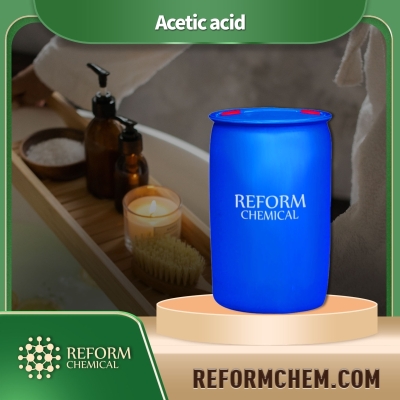-
Categories
-
Pharmaceutical Intermediates
-
Active Pharmaceutical Ingredients
-
Food Additives
- Industrial Coatings
- Agrochemicals
- Dyes and Pigments
- Surfactant
- Flavors and Fragrances
- Chemical Reagents
- Catalyst and Auxiliary
- Natural Products
- Inorganic Chemistry
-
Organic Chemistry
-
Biochemical Engineering
- Analytical Chemistry
-
Cosmetic Ingredient
- Water Treatment Chemical
-
Pharmaceutical Intermediates
Promotion
ECHEMI Mall
Wholesale
Weekly Price
Exhibition
News
-
Trade Service
In recent years, my country has made great progress in the field of chronic hepatitis B prevention and treatment, and grassroots doctors have gradually participated in the prevention, diagnosis and treatment of chronic hepatitis B.
The Chinese Medical Association has organized liver disease, infection experts and general practitioners to jointly develop "Chronic Hepatitis B Primary Diagnosis and Treatment Guidelines (2020)", let's take a look at the diagnostic criteria and treatment goals of chronic hepatitis B! The diagnostic criteria for chronic hepatitis B are based on the results of serological, virological, biochemical tests and other clinical and auxiliary examinations of people infected with hepatitis B virus (HBV).
Clinically, chronic HBV infection can be divided into the following categories
.
(1) Chronic HBV carrier status: also known as HBeAg-positive chronic HBV infection
.
Most of them are young people who are positive for HBsAg, HBeAg, and HBV DNA in the immune tolerance phase.
Follow-up 3 times in 1 year, at least 3 months apart, all show that serum ALT and AST are in the normal range, and HBV DNA is high.
Level (usually> 2×107 IU/ml), serum HBsAg is high (usually> 1×104 IU/ml), liver histology examination has no obvious inflammation, necrosis or fibrosis
.
(2) HBeAg-positive chronic hepatitis B (CHB): The patient is in the immune clearance period
.
Serum HBsAg is positive, HBeAg is positive, HBV DNA is positive (usually >2×104 IU/ml), ALT is persistent or repeated abnormally, or liver histological examination has obvious inflammation, necrosis and/or fibrosis
.
(3) Inactive HBsAg carrying status: also known as HBeAg-negative chronic HBV infection
.
In the immune control period, serum HBsAg positive, HBeAg negative, anti-HBe positive or negative, HBV DNA<2×103 IU/ml, HBsAg<1×103 IU/ml, follow up more than 3 times in a year, at least every time At 3 months, both ALT and AST were in the normal range
.
The imaging examination showed no signs of cirrhosis, and the liver histological examination showed that the histological activity index (HAI) score was less than 4 or the lesion was judged to be mild according to other semi-quantitative scoring systems
.
(4) HBeAg-negative CHB: it is the reactivation period
.
Serum HBsAg is positive, HBeAg is continuously negative, HBV DNA is positive (usually ≥2×103 IU/ml), ALT is persistent or recurrent abnormal, or liver histology has hepatitis lesions
.
(5) Occult HBV infection (OBI): It is defined as negative for serum HBsAg but positive for HBV DNA in serum and/or liver tissue
.
In addition to HBV DNA positive, 80% of patients may have serum anti-HBs, anti-HBe and/or anti-HBc positive, which is called seropositive OBI; 1%-20% of OBI patients have negative serological markers , Called serology negative OBI
.
Diagnosis is mainly through HBV DNA testing, especially for those who are persistently positive for anti-HBc
.
The mechanism of its occurrence is not completely clear
.
(6) Hepatitis B cirrhosis: The diagnosis of hepatitis B liver cirrhosis meets the following ① and ② is the pathological diagnosis, and the one that meets ① and ③ is the clinical diagnosis
.
① Patients with current HBV infection (HBsAg positive) in medical history and blood test, or a clear history of chronic HBV infection (previous HBsAg positive> 6 months, current HBsAg negative, anti-HBc positive) and other causes are excluded
.
②The pathology of liver biopsy is consistent with the manifestations of liver cirrhosis
.
③ Those who meet 2 or more of the following 5 items, and exclude non-cirrhotic portal hypertension: ⓐImaging examination shows signs of liver cirrhosis and/or portal hypertension
.
Ⓑ Endoscopy showed esophagus and gastric fundus varicose veins
.
ⒸThe liver TE measurement shows that the liver stiffness is consistent with liver cirrhosis
.
ⒹBlood biochemical examination showed that the albumin level was reduced (<35 g/L) and/or prothrombin time was prolonged (>3 s longer than the control)
.
ⒺThe routine examination of peripheral blood showed that the platelet count was less than 100×109/L
.
Clinically, liver cirrhosis is often divided into a compensatory phase and a decompensated phase according to whether there have been serious complications such as ascites, rupture of esophageal and gastric varices and hepatic encephalopathy
.
Compensated liver cirrhosis refers to imaging, biochemical or hematological examinations with evidence of hepatocyte synthesis dysfunction or portal hypertension, or histology is consistent with the diagnosis of liver cirrhosis, but there is no bleeding, ascites, or hepatic varices of the esophagus and gastric fundus encephalopathy symptoms or severe complications; decompensated cirrhosis means that patients can occur through bleeding esophageal varices, hepatic encephalopathy, ascites and other serious complications one person
.
The goal of treatment for chronic hepatitis B is to minimize HBV replication for a long time, reduce hepatocyte inflammatory necrosis and liver fibrosis, delay and reduce the occurrence of liver failure, decompensation of liver cirrhosis, hepatocellular carcinoma (HCC) and other complications , Thereby improving the quality of life and prolonging survival time
.
In the process of treatment, the clinical cure (or functional cure) of CHB is pursued as much as possible for some suitable patients
.
Clinical cure (or functional cure) means that HBsAg-negative (with or without anti-HBs) remains HBsAg negative (with or without anti-HBs), HBV DNA is undetectable, liver biochemical indicators are normal, and liver histological lesions are improved after stopping treatment
.
However, because the covalently closed circular DNA in the hepatocyte nucleus is not cleared, under special conditions such as strong immunosuppression, there is still the risk of HBV reactivation and HCC
.
The above content is extracted from: Chinese Medical Association, Chinese Medical Association Journal, Chinese Medical Association General Practice Branch, etc.
Guidelines for the diagnosis and treatment of chronic hepatitis B (2020) [J].
Chinese Journal of General Practitioners, 2021, 20 (02) ): 137-149.
For the original text, please see "Read the original text"
The Chinese Medical Association has organized liver disease, infection experts and general practitioners to jointly develop "Chronic Hepatitis B Primary Diagnosis and Treatment Guidelines (2020)", let's take a look at the diagnostic criteria and treatment goals of chronic hepatitis B! The diagnostic criteria for chronic hepatitis B are based on the results of serological, virological, biochemical tests and other clinical and auxiliary examinations of people infected with hepatitis B virus (HBV).
Clinically, chronic HBV infection can be divided into the following categories
.
(1) Chronic HBV carrier status: also known as HBeAg-positive chronic HBV infection
.
Most of them are young people who are positive for HBsAg, HBeAg, and HBV DNA in the immune tolerance phase.
Follow-up 3 times in 1 year, at least 3 months apart, all show that serum ALT and AST are in the normal range, and HBV DNA is high.
Level (usually> 2×107 IU/ml), serum HBsAg is high (usually> 1×104 IU/ml), liver histology examination has no obvious inflammation, necrosis or fibrosis
.
(2) HBeAg-positive chronic hepatitis B (CHB): The patient is in the immune clearance period
.
Serum HBsAg is positive, HBeAg is positive, HBV DNA is positive (usually >2×104 IU/ml), ALT is persistent or repeated abnormally, or liver histological examination has obvious inflammation, necrosis and/or fibrosis
.
(3) Inactive HBsAg carrying status: also known as HBeAg-negative chronic HBV infection
.
In the immune control period, serum HBsAg positive, HBeAg negative, anti-HBe positive or negative, HBV DNA<2×103 IU/ml, HBsAg<1×103 IU/ml, follow up more than 3 times in a year, at least every time At 3 months, both ALT and AST were in the normal range
.
The imaging examination showed no signs of cirrhosis, and the liver histological examination showed that the histological activity index (HAI) score was less than 4 or the lesion was judged to be mild according to other semi-quantitative scoring systems
.
(4) HBeAg-negative CHB: it is the reactivation period
.
Serum HBsAg is positive, HBeAg is continuously negative, HBV DNA is positive (usually ≥2×103 IU/ml), ALT is persistent or recurrent abnormal, or liver histology has hepatitis lesions
.
(5) Occult HBV infection (OBI): It is defined as negative for serum HBsAg but positive for HBV DNA in serum and/or liver tissue
.
In addition to HBV DNA positive, 80% of patients may have serum anti-HBs, anti-HBe and/or anti-HBc positive, which is called seropositive OBI; 1%-20% of OBI patients have negative serological markers , Called serology negative OBI
.
Diagnosis is mainly through HBV DNA testing, especially for those who are persistently positive for anti-HBc
.
The mechanism of its occurrence is not completely clear
.
(6) Hepatitis B cirrhosis: The diagnosis of hepatitis B liver cirrhosis meets the following ① and ② is the pathological diagnosis, and the one that meets ① and ③ is the clinical diagnosis
.
① Patients with current HBV infection (HBsAg positive) in medical history and blood test, or a clear history of chronic HBV infection (previous HBsAg positive> 6 months, current HBsAg negative, anti-HBc positive) and other causes are excluded
.
②The pathology of liver biopsy is consistent with the manifestations of liver cirrhosis
.
③ Those who meet 2 or more of the following 5 items, and exclude non-cirrhotic portal hypertension: ⓐImaging examination shows signs of liver cirrhosis and/or portal hypertension
.
Ⓑ Endoscopy showed esophagus and gastric fundus varicose veins
.
ⒸThe liver TE measurement shows that the liver stiffness is consistent with liver cirrhosis
.
ⒹBlood biochemical examination showed that the albumin level was reduced (<35 g/L) and/or prothrombin time was prolonged (>3 s longer than the control)
.
ⒺThe routine examination of peripheral blood showed that the platelet count was less than 100×109/L
.
Clinically, liver cirrhosis is often divided into a compensatory phase and a decompensated phase according to whether there have been serious complications such as ascites, rupture of esophageal and gastric varices and hepatic encephalopathy
.
Compensated liver cirrhosis refers to imaging, biochemical or hematological examinations with evidence of hepatocyte synthesis dysfunction or portal hypertension, or histology is consistent with the diagnosis of liver cirrhosis, but there is no bleeding, ascites, or hepatic varices of the esophagus and gastric fundus encephalopathy symptoms or severe complications; decompensated cirrhosis means that patients can occur through bleeding esophageal varices, hepatic encephalopathy, ascites and other serious complications one person
.
The goal of treatment for chronic hepatitis B is to minimize HBV replication for a long time, reduce hepatocyte inflammatory necrosis and liver fibrosis, delay and reduce the occurrence of liver failure, decompensation of liver cirrhosis, hepatocellular carcinoma (HCC) and other complications , Thereby improving the quality of life and prolonging survival time
.
In the process of treatment, the clinical cure (or functional cure) of CHB is pursued as much as possible for some suitable patients
.
Clinical cure (or functional cure) means that HBsAg-negative (with or without anti-HBs) remains HBsAg negative (with or without anti-HBs), HBV DNA is undetectable, liver biochemical indicators are normal, and liver histological lesions are improved after stopping treatment
.
However, because the covalently closed circular DNA in the hepatocyte nucleus is not cleared, under special conditions such as strong immunosuppression, there is still the risk of HBV reactivation and HCC
.
The above content is extracted from: Chinese Medical Association, Chinese Medical Association Journal, Chinese Medical Association General Practice Branch, etc.
Guidelines for the diagnosis and treatment of chronic hepatitis B (2020) [J].
Chinese Journal of General Practitioners, 2021, 20 (02) ): 137-149.
For the original text, please see "Read the original text"







